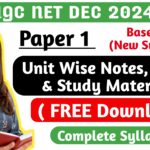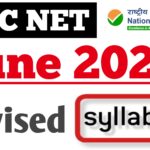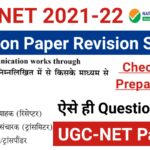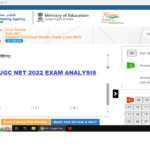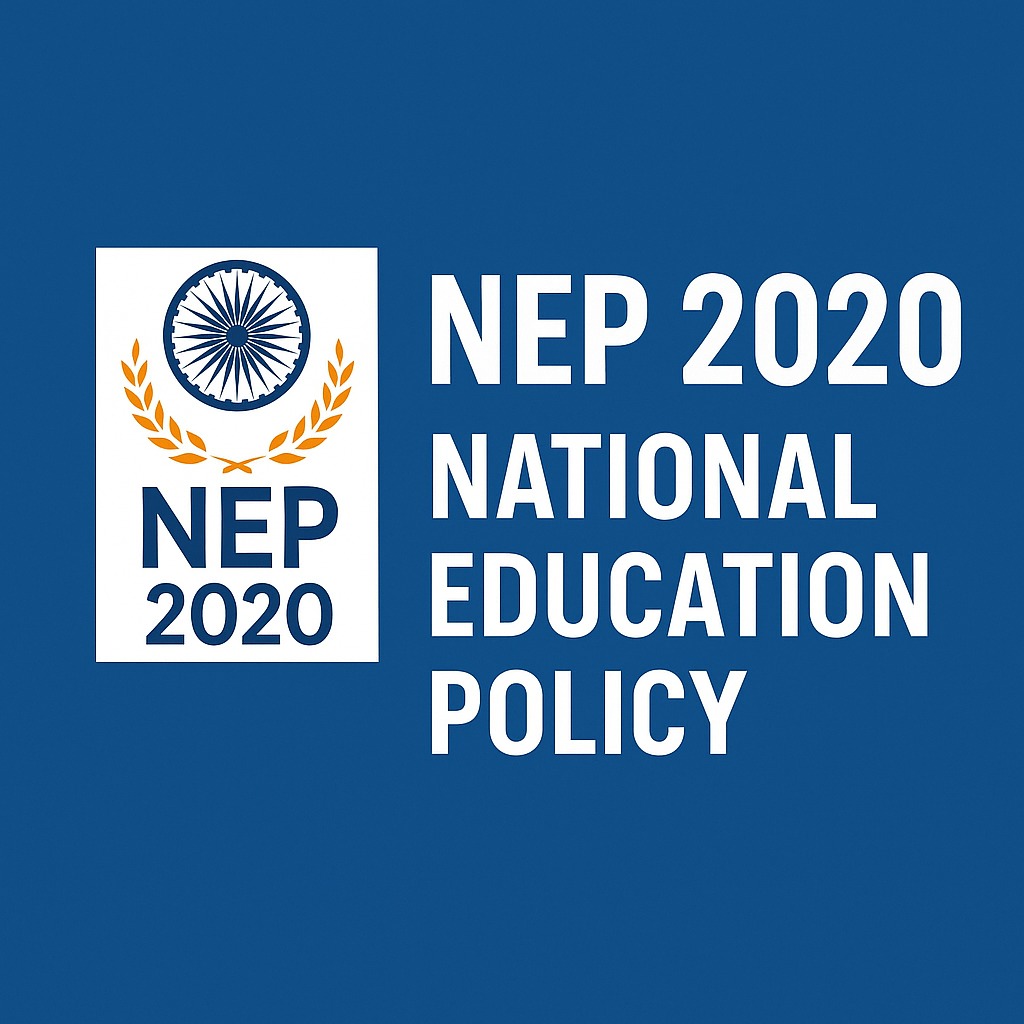Teaching Aptitude is comprised of two words – Teaching and Aptitude.
Many defininitions have beed provided for teaching.
According to Gage teaching is personal relationship between the teacher and the taught causing behaviour modification. According to Clarke all those organized activities that may result in modifying the behavior of the learner is known as teaching.
Aptitude is natural ability to do something.
So teaching aptitude is the natural ability to teach, it involves the study of student teacher relationship in a controlled environment.
Now a days teaching aptitude has become more important and if one wants to get a teacher appointment in any school/college /university. he/she needs to clear teaching aptitude exam. Most common exams asking questions on teaching aptitude are–

Q1 निम्नलिखित में कौन-सा शब्द अपनी सोच-प्रक्रियाओं, स्व-संचालन और अपने व्यवहार को परिवर्तित करने की क्षमता को दर्शाने के लिए उपयोग किया जा सकता है?
(a) मेटाकॉग्निशन या मेटा अनुभूति
(b) स्व-विनियमन (self-regulation)
(c) सरल अनुभूति
(d) उपरोक्त में से कोई नहीं
Which of the following words can be used to describe one’s own thinking processes, self-conduct and ability to change one’s behaviour?
(a) Metacognition or Meta Cognition
(b) self-regulation
(c) simple cognition
(d) none of the above
Q2 शिक्षक प्रायः छात्र की सीखने की समस्याओं का विश्लेषण करते हुए पाते हैं कि उनमेंः
(a) प्रेरणा का अभाव है।
(b) बुद्धि की कमी है।
(c) माता-पिता का ढीला-ढाला रवैया है।
(d) उपरोक्त में से कोई नहीं
Teachers often analyse student learning problems and find that they include:
(a) There is a lack of motivation.
(b) There is a lack of intelligence.
(c) There is a loose attitude of the parents.
(d) none of the above
Q3 निम्नलिखित में से कौन से शब्द का प्रयोग सार्थक तथ्यों, नियमों, परिभाषाओं, अवधारणाओं, सिद्धांतों, इत्यादि को वर्णित करने के लिए किया जा सकता है?
(a) अर्थ-संबंधी स्मृति (semantic memory)
(b) उपख्यानात्मक स्मृति (episodic memory)
(c) प्रक्रियात्मक स्मृति (procedural memory)
(d) उपरोक्त में से कोई नहीं
. Which of the following words can be used to describe meaningful facts, rules, definitions, concepts, principles, etc.?
(a) Semantic memory
(b) Episodic memory
(c) procedural memory
(d) none of the above
Q4 निम्नलिखित में से कौन-सेशब्द का प्रयोग हम स्वयं की स्मृति प्रक्रियाओं के बारे में जागरूकता और सूचना के भंडारण और उसकी पुनः प्राप्ति को बढ़ाने के ढंग के संदर्भ में कर सकते हैं?
(a) अर्थ-संबंधी स्मृति
(b) उपाख्यानात्मक स्मृति
(c) प्रक्रियात्मक स्मृति
(d) मेटा स्मृति
Which of the following terms can be used to refer to the way we increase our awareness of our own memory processes and the storage and retrieval of information?
(a) semantic memory
(b) anecdotal memory
(c) Procedural memory
(d) Meta memory
5. निम्नलिखित में से कौन-सा कारक श्रवण प्रक्रिया को प्रतिकूल ढंग से प्रभावित कर सकता है?
(a) अपेक्षित से अधिक श्रवण-सामग्री के अतिरिक्त
(b) बोलने की बहुत ही उच्च गति
(c) श्रुत विषय-वस्तु की क्षति
(d) उपरोक्त सभी
. Which of the following factors can adversely affect the hearing process?
(a) in addition to more hearing aids than required
(b) very high speed of speech
(c) loss of audio material
(d. All of the above
6. श्रवण को संचार का सबसे महत्त्वपूर्ण पहलू माना जा सकता है। इसमें कैसे सुधार लाया जा सकता है?
(a) श्रवण को मौद्रिक पुरस्कार से संबंधित करना
(b) शिक्षण सामग्री को रुचिकर और आवश्यकता से संबंधित करके
(c) स्वर को और अधिक प्रभावशाली बनाना
(d) उपरोक्त सभी
. Listening can be considered as the most important aspect of communication. How can it be improved?
(a) Relating the hearing to monetary rewards
(b) By making the learning material interesting and relevant to the need
(c) to make the tone more effective
(d. All of the above
7. निम्नलिखित में से कौन-सेशब्द एक व्याख्यान के अर्थ को बताने के लिए सबसे उपयुक्त है?
(a) सूचना का श्रवण (informational listening)
(b) मूल्यांकन श्रवण (evaluative listening)
(c) गुरुतापूर्वक श्रवण (emphatic listening)
(d) गतिशील श्रवण (dynamic listening)
. Which of the following words is most appropriate to describe the meaning of a lecture?
(a) informational listening
(b) evaluative listening
(c) emphatic listening
(d) Dynamic listening
8. अग्रलिखित में से कौन-सा कथन मूल्यांकन श्रवण से संबंधित है?
(a) किसी विचार को स्वीकार या अस्वीकार करना
(b) वक्ता के व्यक्तित्व एवं प्रतिष्ठा का मूल्यांकन करने के लिए
(c) दोनों (a) और (b)
(d) उपरोक्त में से कोई नहीं
184. Which of the following statements is related to evaluation listening?
(a) to accept or reject an idea
(b) To evaluate the personality and reputation of the speaker
(c) both (a) and (b)
(d) none of the above
9. फ्रांसिस गैलन के अनुसार, आनुवंशिकता का सारा श्रेय तत्काल माता-पिता को नहीं बल्कि दूर के पूर्वजों को जाता है। निम्नलिखित में सेकिसको आनुवंशिकता का केवल 50% श्रेय जाता है?
(a) माता-पिता
(b) दादा दादी/नाना नानी
(c) परदादा परदादी/परनाना परनानी
(d) उपरोक्त में से कोई नहीं
. According to Francis Galen, all the credit for heredity does not go to the immediate parents but to the distant ancestors. Which of the following accounts for only 50% of heredity?
(a) parents
(b) Grandparents
(c) great-grandfather/great-grandmother/great-grandfather
(d) none of the above
10. शिक्षण प्रक्रिया के निम्नलिखित सोपानों को क्रम में व्यवस्थित करेंः
I. वर्तमान ज्ञान को पूर्व ज्ञान से संबंधित करना
II. मूल्यांकन
III. पुनः शिक्षण
IV. शिक्षण उद्देश्यों का निरूपण
V. शिक्षण सामग्री की प्रस्तुति
कूट:
- I, II, III, IV, V (b) II, I, III, IV, V (c) V, IV, III, I, II (d) IV, I, V, II, III
- I, II, III, IV, V
10. Arrange the following stages of the teaching process in sequence:
I. Relating existing knowledge to past knowledge
II. Evaluation
III. re-education
IV. formulation of learning objectives
V. Presentation Code of Teaching Material:
(a) I, II, III, IV, V (b) II, I, III, IV, V (c) V, IV, III, I, II (d) IV, I, V, II, III
11. एक छात्र व्याख्यान की अवधि में शिक्षक की समस्याओं को हल करने में सहायता करता है। उक्त छात्र निम्नलिखित में सेकिस वर्गीकरण के अन्तर्गत आता है?
(a) एक प्रभावी श्रोता
(b) एक मूल्यांकन करने वाला श्रोता
(c) एक यथार्थवादी श्रोता
(d) उपरोक्त में से कोई नहीं
11. A student helps the teacher in solving problems during the lecture period. The said student comes under which of the following classification?
(a) an effective listener
(b) an appraisal audience
(c) a realistic listener
(d) none of the above
12. निम्नलिखित में से कौन-से उपाय संचार प्रक्रिया को सुगम बनाने का कार्य करते हैं?
(a) अपनत्व और समानता की भावना
(b) चयन के लिए सुरक्षा और स्वतंत्रता
(c) अनौपचारिक वातावरण
(d) उपरोक्त सभी
12. Which of the following measures work to facilitate the communication process?
(a) sense of belonging and equality
(b) Security and freedom to choose
(c) Informal environment
(d. All of the above
13. निम्नलिखित में सेकिसको हम अधिगम का एक परिणाम कह सकते हैं?
(a) बुद्धिमत्ता
(b) परिपक्वता
(c) कौशल
(d) स्मरण शक्ति
13. Which of the following can we call an outcome of learning?
(a) intelligence
(b) maturity
(c) skill
(d) memory power
14. निम्नलिखित में से कौन-सेशब्द मानसिक विकास को सबसे उपयुक्त रूप से वर्णित करते हैं?
(a) मानसिक विकास का स्वरूप शारीरिक विकास के समानांतर चलता है।
(b) यह एक अनिश्चित पैटर्न है।
(c) यह एक अनियमित पैटर्न नहीं है।
(d) मध्य किशोर तक वृद्धि एवं तत्पश्चात समतल होना।
14. Which of the following words most appropriately describe mental development?
(a) The nature of mental development runs parallel to physical development.
(b) It is an indeterminate pattern.
(c) It is not a random pattern.
(d) Growth up to mid-teens and then flattening.
15. निम्नलिखित में से कौन-सा कथन श्रवण के संदर्भ में सही है?
(a) श्रवण (hearing) एक शारीरिक प्रक्रिया है, ध्यानपूर्वक श्रवण (listening) एक मनोवैज्ञानिक प्रक्रिया है।
(b) श्रवण एक मनोवैज्ञानिक प्रक्रिया है, ध्यानपूर्वक श्रवण एक शारीरिक प्रक्रिया है।
(c) दोनों मुख्य रूप सेशारीरिक प्रक्रियाएं हैं।
(d) दोनों जैविक प्रक्रियाएं हैं।
15. Which of the following statements are correct regarding hearing?
(a) Hearing is a physical process, listening attentively is a psychological process.
(b) Listening is a psychological process, attentive listening is a physical process.
(c) Both are primarily physiological processes.
(d) Both are biological processes.
16. निम्नलिखित में से कौन-सा कथन सही है?
(a) मानवीय रिश्तों को श्रवण प्रक्रिया के द्वारा प्रभावित नहीं किया जा सकता है।
(b) उच्च शिक्षण संस्थान के छात्र संवाद स्थापित करने में अपना आधा काल निकाल देते हैं।
(c) श्रवण हमारी संचार का केवल मात्र एक छोटा सा अंश होता है।
(d) उपरोक्त में से कोई नहीं
Which of the following statement is correct?
(a) Human relationships cannot be influenced by the auditory process.
(b) Students of higher educational institutions spend half their time in establishing communication.
(c) Hearing is only a small part of our communication.
(d) none of the above
17. एक व्यक्ति सुनता है और दूसरों के विचारों को समझने का प्रयास भी करता है। निम्नलिखित में से कौन-सेशब्द ऐसे व्यक्ति को वर्णित करने के प्रयुक्त किए जा सकते हैं?
(a) सक्रिय श्रवण (active listening)
(b) समानुभूति श्रवण (empathetic listening)
(c) आलोचनात्मक श्रवण (critical listening)
(d) उपरोक्त में से कोई नहीं
17. A person listens and tries to understand the views of others. Which of the following words can be used to describe such a person?
(a) Active listening
(b) Empathetic listening
(c) Critical listening
(d) none of the above
18. निम्नलिखित कथनों पर विचार कीजिए:
1. समस्याओं के लिए सुनने का प्रयास
2. गैर-मौखिक संकेतों पर ज्यादा ध्यान न देना
3. विषय बदलने के लिए हस्तक्षेप करना
निम्नलिखित में से कौन-सेलिंग को इन कथनों से संबंधित करने की सम्भावना अधिक रहती है?
(a) पुरुष
(b) स्त्री
(c) स्त्री और पुरुष दोनों
(d) यह किसी लिंग से संबंधित नहीं है
18. Consider the following statements:
1. Trying to Listen for Problems
2. Not paying much attention to non-verbal cues
3. Intervening to change the subject
Which of the following is most likely to relate to these statements?
(a) male
(b) woman
(c) both male and female
(d) it does not belong to any gender
19. निम्नलिखित में से कौन-सेशब्द गहन सोच को दर्शाते हैं?
(a) ध्यान मुख्य बिंदु के बजाए पूर्ण रूप सेविवरण पर केंद्रित करना।
(b) संचार के संदर्भ की उपेक्षा करना।
(c) जब संदेश प्रस्तुत किया जा रहा है तब मूल्यांकन करना।
(d) यह केवल सुनने के साथ जुड़ा हुआ है।
19. Which of the following words denote deep thinking?
(a) Focusing on the whole detail rather than the main point.
(b) Ignoring the context of communication.
(c) To evaluate when the message is being presented.
(d) It is associated with hearing only.
20. स्पष्ट जानकारी के उद्देश्य से प्रश्न पूछना, संदेशों को कथित-कथन करना (paraphrase) और भ्रमित (confuse) करने वाली विषय-वस्तु की पहचान करना, इत्यादि मूल रूप सेकिसको इंगित करते हैं?
(a) श्रवण बाधाएँ
(b) मनोरंजन के लिए सुनना
(c) संदेश को समझने के लिए तकनीक की सहायता लेना
(d) उपरोक्त में से कोई नहीं
20. Asking questions for the purpose of clear information, to paraphrase messages and identify confusing content, etc. basically refers to
(a) Hearing Impairments
(b) listening for fun
(c) Using technology to understand the message
(d) none of the above
21. निम्नलिखित में सेकिसको व्याख्यान सुनने के लिए सुझाव माना जाना चाहिए?
(a) शब्दों के वितरण गति, सारांश करने से बचने का प्रयास और सूचना की समीक्षा करना
(b) रचनात्मक सोच ध्यान देना, विवरण पर ध्यान ना देना एवं व्याख्यान संकेतों की अनदेखी पर कम करना (c) नोट्स न बनाना ताकि व्याख्यान एवं संदेश वितरण पर ज्यादा ध्यान दिया जा सके
(d) रुचिपूर्वक अंश पर ध्यान देना, भटकाव से बचना एवं मुख्य विचारों को ग्रहण करना
21. Which of the following should be considered a suggestion for listening to the lecture?
(a) speed up word delivery, try to avoid summarizing and reviewing information
(b) paying less attention to creative thinking, not paying attention to details and ignoring lecture prompts
(c) not making notes so that more attention can be given to lecture and message delivery
(d) to pay attention to the part with interest, to avoid distraction and to grasp the main ideas
22. निम्नलिखित में से कौन-सा/सेशब्द सूचना का स्थान निर्धारण करना, मूल्यांकन, और प्रभावी ढंग से उपयोग करने की क्षमता के लिए प्रयोग किया जा सकता/सकते हैं?
(a) गहन सोच
(b) सूचना साक्षरता
(c) श्रवण
(d) चयनात्मक ध्यान
22. Which of the following words/s can be used to describe the ability to place, evaluate, and use information effectively?
(a) Critical thinking
(b) Information Literacy
(c) Hearing
(d) selective attention
23. प्राथमिक स्तर शिक्षण यथासम्भव मातृ भाषा में ही होने चाहिए, क्योंकिः
(a) यह बच्चों में आत्मविश्वास विकसित करता है।
(b) यह अधिगम को सरल बनाता है।
(c) यह बौद्धिक विकास में सहायक है।
(d) यह शिक्षार्थी को प्राकृतिक वातावरण में सीखने में सहायक है।
23. Teaching at the primary stage should, as far as possible, be in the mother tongue, because:
(a) It develops self-confidence in children.
(b) It facilitates learning.
(c) It helps in intellectual development.
(d) It helps the learner to learn in the natural environment.
24. निम्नलिखित में शिक्षार्थी को प्रेरित करने के लिए कौन-सा दृष्टिकोण सबसे उपयुक्त है?
(a) उचित पुरस्कार देना
(b) उपयुक्त मार्गदर्शन करना
(c) सदैव उपयुक्त उदाहरण देना
(d) कक्षा में व्याख्यान देना
24. Which of the following is the most appropriate approach to motivate the learner?
(a) giving a fair reward
(b) Provide appropriate guidance
(c) Always give appropriate examples
(d) giving lectures in class
SEE ALSO
- UGC NET 26 JUNE 2025 QUESTION PAPER & EXAM ANALYSISAs per the students’ feedback, the UGC NET 26 JUNE 2025 QUESTION PAPER exam overall difficulty level is Moderate. Some felt Easy. Some of the students’ said
- UGC NET 25 JUNE 2025 Question Paper & Exam AnalysisUGC NET 25 JUNE 2025 Question Paper: As per the reviews of the students, UGC NET Exam Analysis 2025 is provided here, along with the question paper and answer key.
- Data Interpretation Question with Answer: For UGC NET/UPSC/IBPS/SSC/RailwayAll Latest DI Data Interpretation Question with Answer: For UGC NET/UPSC/IBPS/SSC/Railway & All Competition exam
- NEP 2020 One Liner Notes in (Hindi & English)Important for All CompetitonExam NEP 2020 One Liner Notes & Important Abbreviations in NEP 2020
- Logical Reasoning One liner Notes UGC NETLogical Reasoning One liner Notes Related to Fallacy types , Hetvabhas , pramana , anumana , nyaya school of philosophy , Indian logic
- Environment One Liner Notes : For All Competition ExamEnvironment One Liner Notes हिंदी और अंग्रेज़ी में Ecology, Biosphere, Protocol, Natural, Carto genic Disaster, SDG, MDG, COP से संबंधित दिए जा रहे हैं।
- 📚 ICT One Liner Notes For : All Competition ExamICT One Liner Notes (Hindi & English) में से नोट्स दिए जा रहे हैं। ये नोट्स स्टोरेज, नेटवर्किंग, इंटरनेट, ईमेल, वेब टूल्स आदि से संबंधित हैं।
- CTET CDP One Liner Notes in Hindi & EnglishCTET CDP Child Development and Pedagogy से संबंधित 200 One-Liner Notes ( हिंदी और अंग्रेज़ी में) for Quick Revision & coming Exams
- Higher Education One Liner Questions & Notes For : UGC NETHere are 200 One-Liner Notes on Higher Education for UGC NET Paper 1 in Hindi & English, based on the latest syllabus. It will provide you Quick Revision
- Research Aptitude One liner Notes for UGC NET /SET/Phd200 complete bilingual one-liner notes (Hindi + English covering the entire Research Aptitude & Research Methodology syllabus for UGC NET Paper 1 –
25. शिक्षक के लिए छात्रों में अच्छे संस्कार उत्पन्न करने का सबसे श्रेष्ठ मार्ग कौन-सा है?
(a) कहानी सुनाना
(b) अनुशासन की भावना विकसित करना
(c) शिक्षक का स्वयं का आदर्श व्यवहार
(d) उनके माता-पिता को विश्वास में लेना
25. Which is the best way for a teacher to inculcate good values in the students?
(a) story telling
(b) develop a sense of discipline
(c) teacher’s own ideal behavior
(d) taking their parents into confidence
26. जीवन में सफलता प्राप्त करने के लिए छात्रों को कैसेप्रेरित किया जा सकता है?
(a) चयनित अध्ययन
(b) आकस्मिक अध्ययन
(c) गहन अध्ययन
(d) कण्ठस्थ करना
26. How can students be motivated to achieve success in life?
(a) Selected studies
(b) Casual Study
(c) intensive study
(d) Memorizing
27. निम्नलिखित में से अनुपस्थिति की समस्या के समाधान के लिए सबसे श्रेष्ठ उपाय कौन-सा है?
(a) पाठ्यक्रम को कम करना
(b) शिक्षकों की सहानुभूति
(c) शिक्षण संस्थान का आकर्षक वातावरण
(d) छात्रों को प्रेरित करना
27. Which of the following is the best way to solve the problem of absenteeism?
(a) reducing the syllabus
(b) sympathy of teachers
(c) Attractive environment of the educational institution
(d) motivating the students


